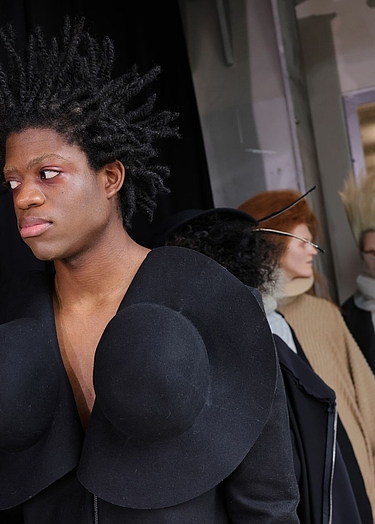
News

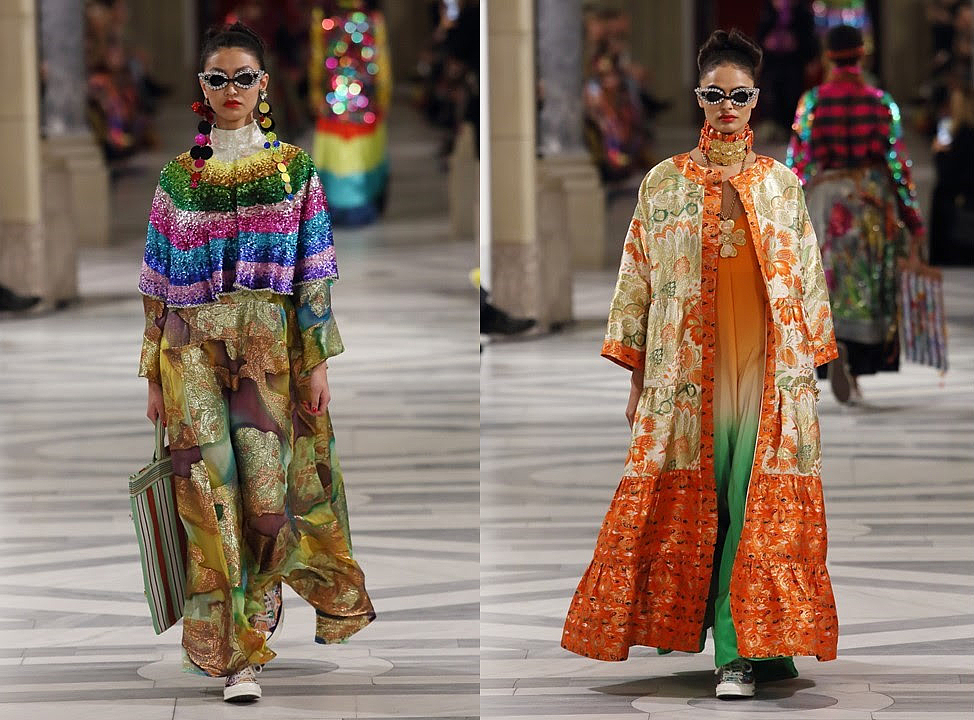
“Opera” is the title of Rianna + Nina’s Fall/Winter 24/25 collection, showcased by the duo in the impressive halls of the Bode Museum. Once again, the Berlin Contemporary winners transformed unique vintage fabrics into colorful one-of-a-kind pieces, inspired by a very special icon.
The defilée of the Berlin Contemporary winners perfectly matched this credo. The duo presented their impressive looks in an equally grand atmosphere, namely at the Bode Museum. Their show was musically underscored by the source of inspiration for their current designs: Maria Callas.
Your collection is titled OPERA and pays homage to Maria Callas and her stage costumes. What fascinates you particularly about the icon?
Maria Callas has accompanied Rianna since her childhood and remains one of the most outstanding sopranos of the 20th century to this day. It's not just her music, but also her fascinating life that inspired us. She was an extraordinary artist and an extremely elegant woman. Her unmistakable aesthetic subtly influenced every single design of our collection.
Which silhouettes take the spotlight this season?
The focus is on A-line cuts from the 60s and 70s. They are accompanied by numerous golden details, vibrant colors, glitter accents, and sequins. A real eye-catcher are definitely the hand-painted fabrics.
Unique vintage fabrics from around the world, each telling its own story, are always the focus for you. Where do they come from now?
Mainly from Japan and Mexico, where fabrics like silk organzas, vintage silk scarves, obis, and kimonos originate. A special highlight is a belt with quill embroidery from Eastern Europe and a very luxurious fabric from Tokyo, originally intended for kimonos.
What is particularly significant this season?
The numerous glitter and gold elements are particularly striking, adding a glamorous touch to the evening looks and perfectly complementing the contemporary interpretation of Maria Callas' style. Another highlight is the accessories, including rhinestone-studded swim goggles, which stand in stark contrast to the evening gowns. Additionally, this season we collaborated with Converse. Rianna hand-painted the shoes in our studio.
What are your top 3 looks?
One of our favorites is a tribute to the operetta "Carmen." The look consists of a skirt and a ruffle blouse, both made from vintage silk scarves. Another is a halter-neck dress made of organza, which Rianna discovered in Paris and hand-painted. Our third favorite look is an apron made from various old Asian embroideries. To give the look additional charm, it is combined with handmade ceramic jewelry from our Berlin studio.
You repeatedly emphasize that your looks are intended for everyone. What idea is behind your model cast?
This season, our looks were presented by a variety of different personalities, including a Greek actress, a ballet dancer, and even a surgeon. This diversity is meant to illustrate that everyone has the opportunity to step into the role of Maria Callas – regardless of background, origin, or age.
"Our fashion embodies diversity and celebrates joy of life with vibrant colors. We aim to spread euphoria and optimism with our designs." - Rianna Kounou and Nina Knaudt, RIANNA + NINA
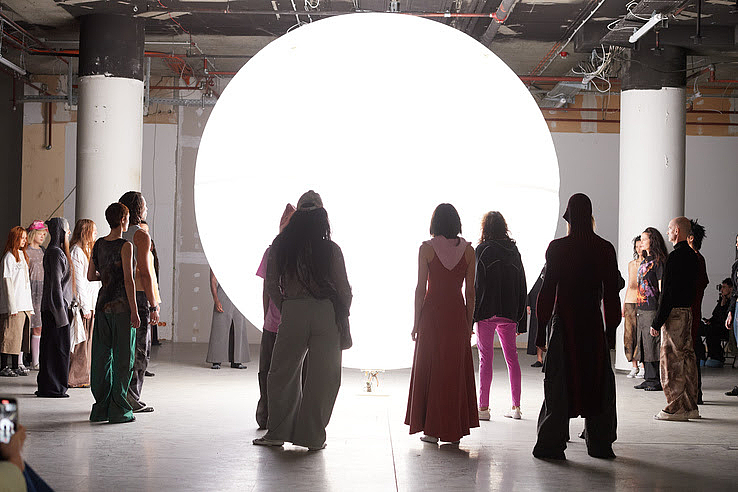
Marie Lueder showcased her "Mono-Myth” collection at the former n24 film studio at Potsdamer Platz. The models sported androgynous looks crafted from denim, jersey, and eco-nylon, orbiting around a four-meter-tall light sphere - symbolizing a sun that never sets.
Inspired by her passion for medieval craftsmanship, Lueder intricately weaves together elements of pattern cutting and fabric manipulation, breathing new life into menswear classics with a genderless twist. As the designer embarks on this transformative odyssey, “Mono-Myth” emerges as a testament to resilience, offering a compelling narrative of hope and empowerment in a world yearning for positivity and change.
Which materials, colors, silhouettes are standing out this season?
We always work with core materials like denim, jersey, and eco-nylon to embody the past, present, and future in apparel and the idea of the wearer. This season, we had the incredible opportunity to work with the Stone Island dye house Tintoria Emiliana to develop hand-finished dyes on our staples. The colors resemble stages of fire, earth, and dust. We also developed a new technique called ‘crystallized’ for our drop-down shoulder ruched bombers. Suits are returning in a shell jacket idea with accentuated elbows rather than wide shoulders, and with an oversized fit. Our first-ever dress, referencing the weight of the hoodie and the garment-dyed aesthetic, exudes a powerful femininity that works on different body types. I am especially excited about our engineered knit coat, 3/4 denims, sash bag, chainmail print, elf caps in collaboration with 4FSB, and the upcycled Phantasy T-shirt hand-airbrushed by Artist Mia Violet. We also collaborated with Jewelry artist Marius Perraud.
Would you describe your favorite looks?
One of my favorite looks is the charcoal Warrioress dress with the asymmetric bust. I got inspired by the idea of holding the bust and also letting it drop naturally… making an androgynous dress that can look super feminine and androgynous too. The suits! The canvas is not existent and the elbows are accentuated like the engineered knit which is based on a medieval metal armor suit of a knight. A recurring theme for the pattern cutting in this collection. Our newly developed hand-dyed finish on the jersey styles is especially exciting and resembles different cycles of fire and burning and ashes which make the ground fertile again. I love the representation of light and fire very much in my work.
Tell us a bit about the choice of location, music, and models.
I love working in autonomous spaces, so we chose the former n24 film studio, which looks like an abandoned shopping mall, to develop this myth about a *sun at night’ that is always there and never leaves the sky. This phenomenon is represented by the set of a 4-meter sun as the center point of the show, surrounded by an audience in a circle sitting around a bonfire. The models walked around it like moths around an artificial light. The sound was initially very dark and later transitioned into bliss and euphoria. We collaborated with the band RAT SECTION, who began their career at one of my earlier performances.
What do you generally want to express with your fashion?
I represent a holistic approach, create awareness for mental health, and aim for complete sustainability.
“The suits! The canvas is not existent and the elbows are accentuated like the engineered knit which is based on a medieval metal armor suit of a knight. A recurring theme for the pattern cutting in this collection.” - Marie Lueder, LUEDER
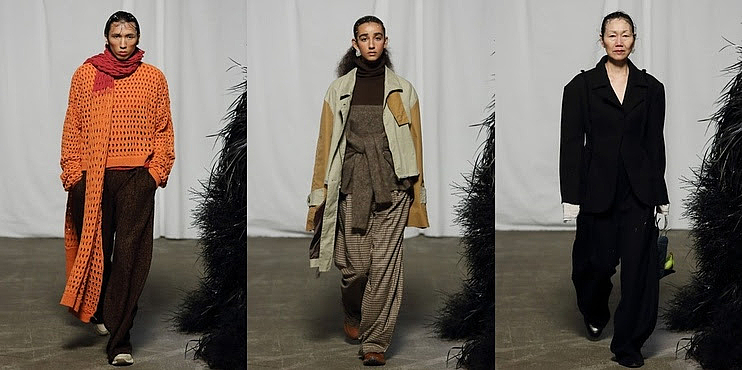
Fabric manipulations, sophisticated layering, and a color palette that reflects temperature fluctuations: Sophie Claussen addresses the pressing challenges of global warming with her Autumn/Winter 2024/25 collection "SWEAT" and explores the fashion needs arising from it.
"SWEAT" is the name of Avenir's Autumn/Winter 2024/25 collection. Designer Sophie Claussen explores the impacts and challenges of global warming and investigates the resulting fashion needs.
Designing fashion that is sustainable and does no harm to the planet, humans, or animals is a guiding principle deeply rooted in Avenir's brand DNA. Since its founding in 2020, the young Berlin-based label has exclusively used re- and upcycled materials. "Avenir means future. Our greatest inspiration always comes from nature and our commitment to environmental protection," explains designer and Berlin Contemporary winner Sophie Claussen.
Fall/Winter 2024/25 bears the name "SWEAT." With her looks, Sophie Claussen examines the impacts and challenges of global warming, climate change, and explores the resulting fashion needs. "The collection serves as a somewhat uncomfortable reminder that Earth's temperatures are rising and our planet is in distress. SWEAT conveys a sense of discomfort and the urgency of environmental protection measures," explains the designer.
The collection skillfully plays with the interplay of warmth and cold. Fabrics are manipulated and textured to represent temperature changes and engage the senses. This is particularly evident in the knit looks, patchwork jackets, and denim designs. Additionally, there are ornamentations that mimic damage from burns. All designs this season were created following the principles of slow fashion, using exclusively up- and recycled materials.
Furthermore, Sophie Claussen uses the idea of layering as a symbol for a weather-dependent and constantly changing wardrobe. Dynamic silhouettes are created through the use of different layers. The color palette is also weather-dependent, transitioning from cooler to warmer tones, thus reflecting the temperature scale.
Avenir's runway show took place during the Berlin Fashion Week at the Kühlhaus. For the flower-adorned set design, Sophie Claussen collaborated this season with Studio Lilo.
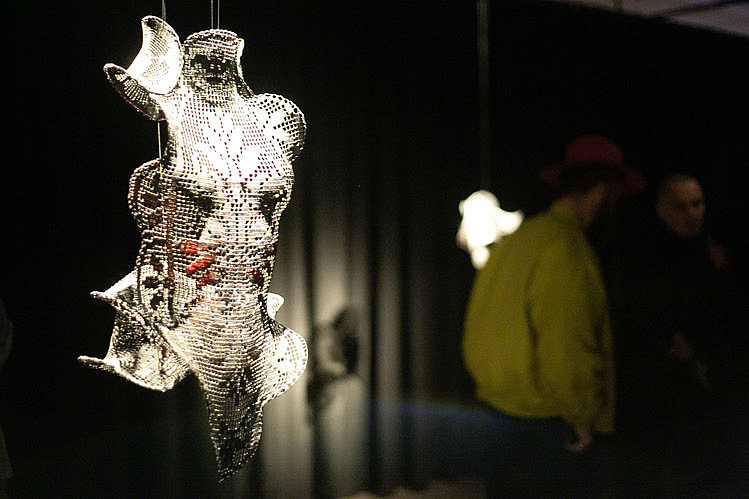
This season, DER BERLINER SALON expanded its exhibition concept: In addition to the group exhibition, the textile artist and designer Karen Jessen showcased her extraordinary designs at the Feuerle Collection.
The native of North Frisia founded her own label in 2012, with which she has always blurred the boundaries between art and fashion. In the Feuerle Collection, she exhibited handcrafted and impressive dress sculptures that floated as artworks in the space. Furthermore, some of her ready-to-wear creations were presented by dancers.
The exhibition, curated by Desirée Feuerle and created in collaboration with the Fashion Council Germany and Nowadays, can be seen until February 14, 2024.
The Feuerle Collection
Hallesches Ufer 70
10963 Berlin
Images are available in the official Berlin Fashion Week Media Hub.